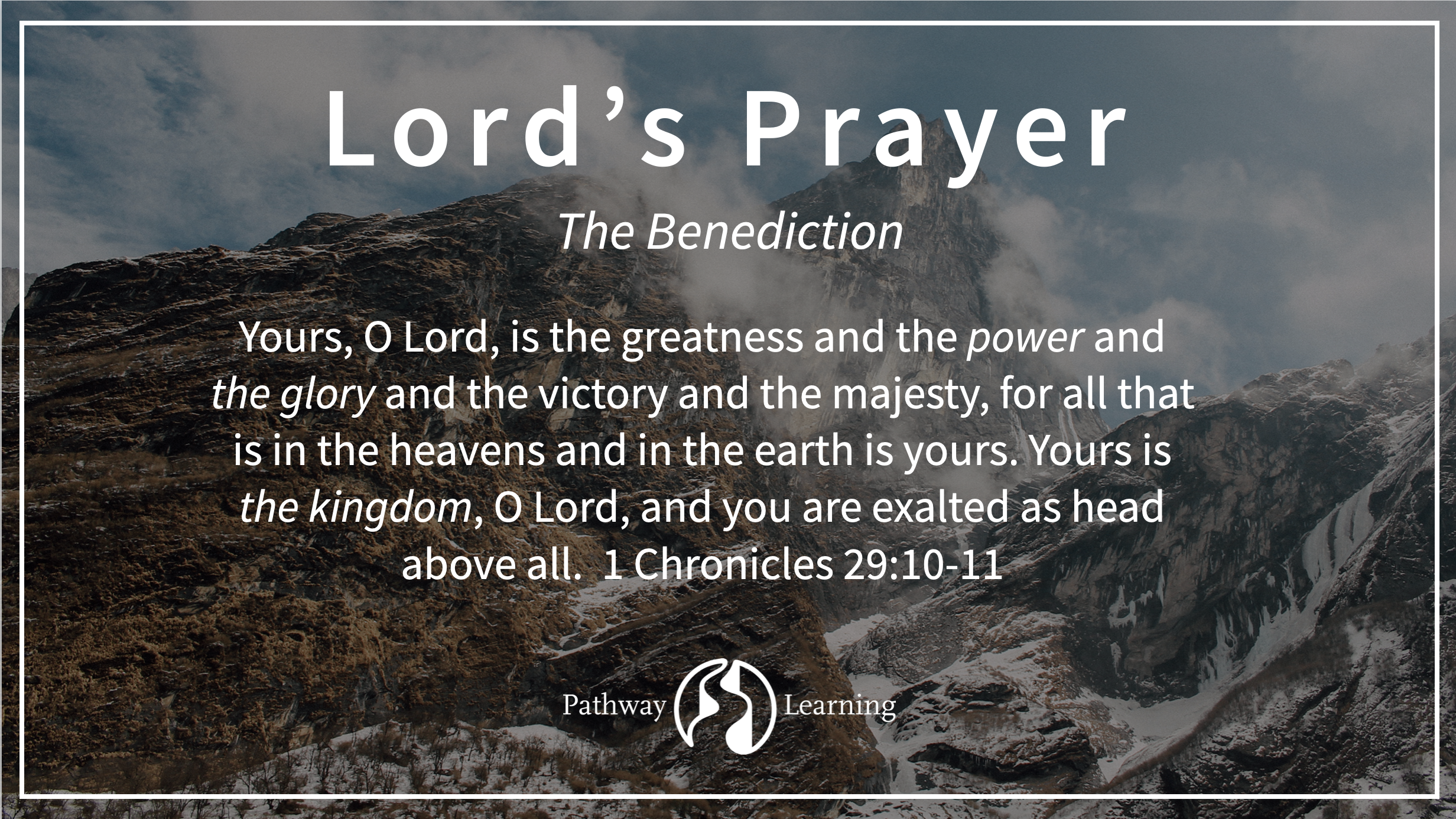Praying the Benediction: Hope in Theology Conclusion
Series: Hope in Theology, Conclusion
Authors: Drs. John M. Frame and Steven L. Childers
Title: Praying the Benediction
Conclusion
The traditional ending of the Lord’s Prayer includes the benediction “For yours is the kingdom and the power and the glory, forever. Amen” (Matt. 6:13). It’s not included in many modern Bible translations because it’s not in the earliest Greek manuscripts of the New Testament.[1]
Church leaders probably added this benediction to the end of the Lord’s Prayer as a part of a public worship liturgy.[2] It seems to be based on King David’s temple prayer in 1 Chronicles 29:11-13.
“Yours, O Lord, is the greatness and the power and the glory and the victory and the majesty, for all that is in the heavens and in the earth is yours. Yours is the kingdom, O Lord, and you are exalted as head above all. Both riches and honor come from you, and you rule over all. In your hand are power and might, and in your hand it is to make great and to give strength to all. And now we thank you, our God, and praise your glorious name.”
David shows the God-centered nature of his temple prayer by his repeated use of the second person pronouns “yours” and “you.” David repeatedly prays phrases like, “Yours, O Lord is the greatness and the power and the glory and the victory and the majesty … Yours is the kingdom, O Lord, and you are exalted …” We see echoes of David’s prayer in the benediction, “For yours is the kingdom and the power and the glory, forever. Amen”
The ultimate goal of the three horizontal petitions in the Lord’s Prayer–for our daily bread, our forgiveness, and our protection–is to see our Father’s answers to the three vertical petitions for his name to be honored, his kingdom to come, and his will to be done on earth as it is in heaven.
Our Father uses our daily needs, sinful failures, and temptations to keep drawing us near to himself so that through his ongoing provisions of our daily bread, forgiveness, and protection, he sweeps us up into his higher purposes for the world to see his name honored, his kingdom come, and his will be done on earth as it is in heaven–through us.
God’s primary purpose for creating the world is so that all the nations would glorify, worship and find their joy in Him. This is why we exist–to glorify God by enjoying Him and helping to extend the worship and enjoyment of God to all nations.
The Christian hope is that when Jesus returns he will make all things new so that God the Father will be honored and glorified in everything forever. (1 Cor. 15:24-25, 28) In the meantime, Jesus calls us to join with him and pray the Lord’s Prayer.
Footnotes:
[1] The traditional doxology is found in the majority of New Testament Greek manuscripts (Textus Receptus and Majority Text) including the Greek uncials dating from the 5th-10th century and the Greek minuscules dating from the 9th-12th century. This is why the doxology is included in the English KJV and NKJV versions. But the doxology is not found in the earlier and best Greek manuscripts, including א, B, D, f1, various Latin and Coptic versions, and numerous church fathers. It’s also not found in Luke’s account of the Lord’s Prayer in Luke 11:2-4. So, most modern English Bible translations do not include it or it’s placed in a margin or footnote, e.g. RSV and NIV.
[2] So, it’s fine for believers to use this doxology to conclude the prayer, but it should not be seen as belonging to Jesus’ teaching.


